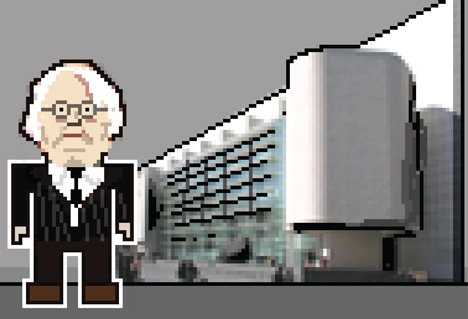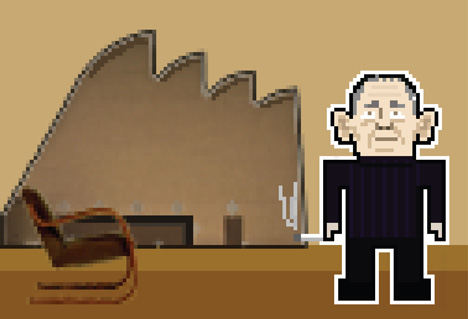Archipix by Federico Babina
Architects including Zaha Hadid, Frank Lloyd Wright and Le Corbusier are depicted like vintage video game characters in these images by graphic designer Federico Babina (+ slideshow).
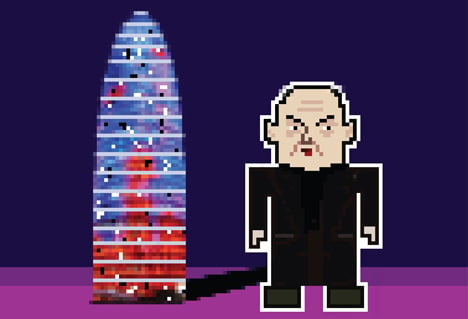
Federico Babina illustrated a series of well-known architects as pixellated graphics with white or black outlines, as if they feature in an 8-bit video game from the 80s.
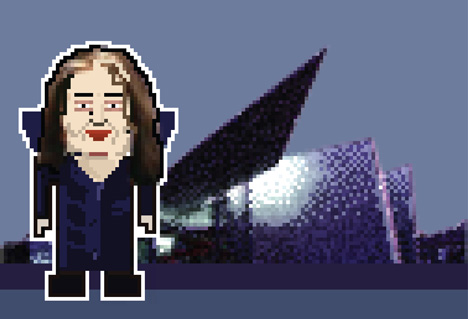
Each is paired with one of their famous projects in the background, coloured with a limited palette.
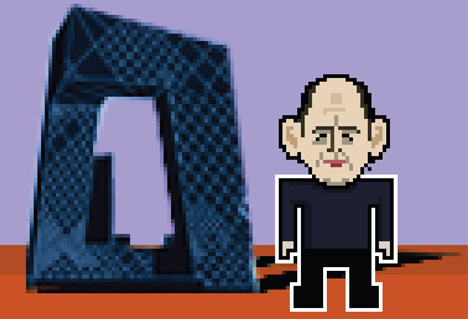
Babina intended the pixellated portraits and backdrops to display the essence of each architect and their buildings.
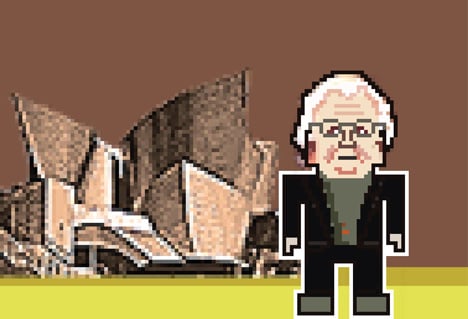
"The idea of this project is to represent the complexity of the forms and personalities through the simplicity of the pixel," he told Dezeen.
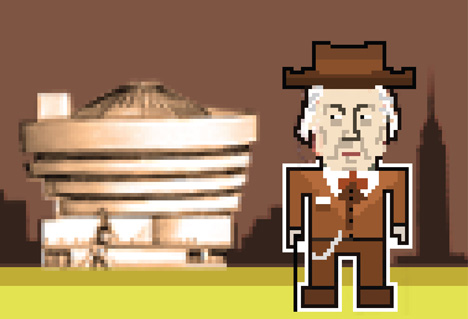
Frank Lloyd Wright stands next to his spiralling Guggenheim Museum in New York, Louis Kahn is positioned in front of the concrete Salk Institute campus in California and Le Corbusier is shown beside his Ronchamp chapel in France.
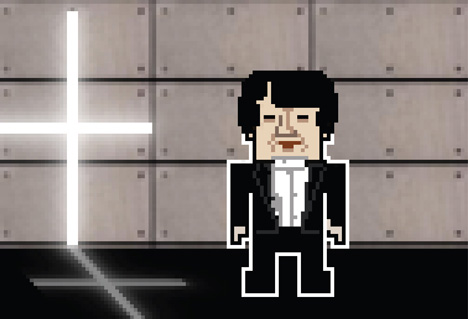
Along with buildings, architects Mies van der Rohe and Alvar Aalto are also pictured with iconic chairs they designed.
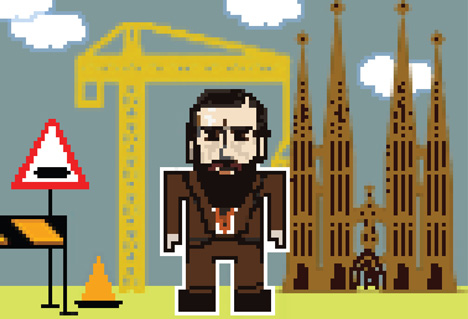
Antoni Gaudí can be seen with his incomplete Sagrada Familia cathedral in Barcelona, surrounded by a construction site.
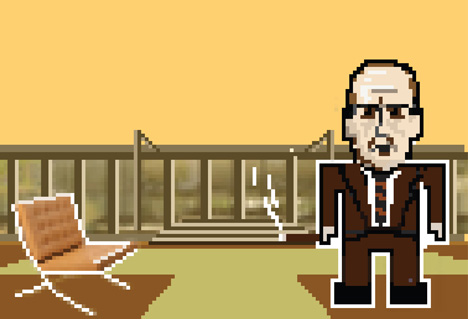
Japanese architects Tadao Ando, Toyo Ito, Arata Isozaki and Kazuyo Sejima of SANAA are all represented too.
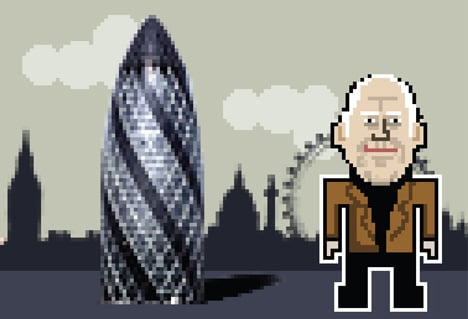
Curved towers by Jean Nouvel and Norman Foster in Barcelona and London respectively are featured, as well as Richard Meier with his Barcelona Museum of Contemporary Art.
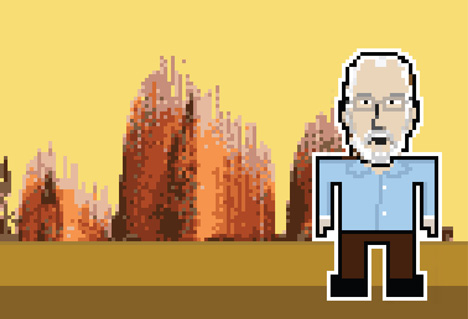
Current "starchitects" Renzo Piano, Zaha Hadid, Frank Gehry and Rem Koolhaas complete the line-up.
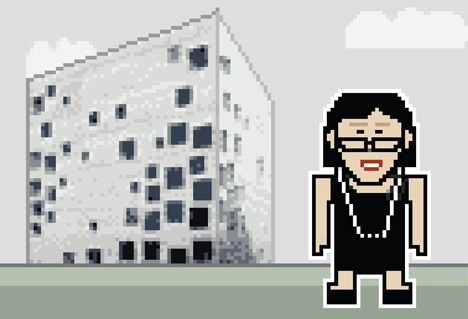
Babina described the style as a kind of "digital pointillism", with the mouse replacing the brush: "The pixel reappears and emphasises the importance that has the single dot, seen as something essential that in combination with other points form a more complex picture."
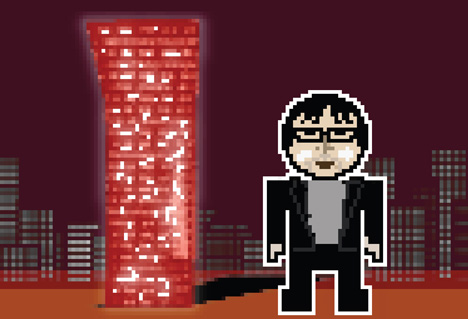
"It's a metaphor of architecture where every little detail is a key component of the whole mosaic," he said.
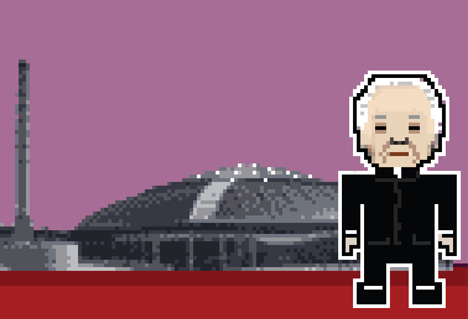
We've previously featured an animation which runs through an A to Z to architects by showing their most famous buildings.
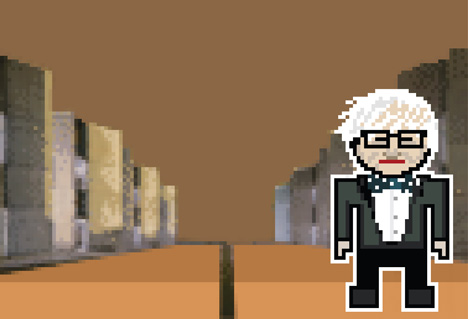
Other graphics on Dezeen include portraits of electronic musicians and DJs that show one image during the day and another at night, plus billboards that stretch outwards to double as street furniture.
